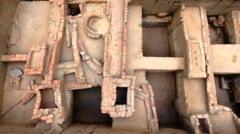In a quiet corner of Northern Ontario, a significant archaeological find has emerged from the shadows of the forest. A runestone, bearing 255 meticulously carved runes and an image of a boat with passengers, has captured the attention of historians and archaeologists alike. Discovered in 2015 after two trees fell on private property near the town of Wawa, the stone had been obscured by soil and moss for years until the collapse revealed it anew.
The karvings on the stone raised initial questions about Viking influence in North America, referencing the one confirmed Viking settlement located in Newfoundland. However, ongoing research has indicated this connection may not hold true, dispelling the common narrative that has often linked Norse culture to the region. It has also been confirmed to be authentic, ruling out theories that suggested it is akin to the later 19th-century forgery of Minnesota's Kensington Runestone.
Kristel Zilmer, a runologist from the University of Oslo, described the stone as “a remarkable find,” implying it reflects the complex ways knowledge and culture migrated between peoples across different regions. Ryan Primrose, the archaeologist who assessed the artifact, expressed his astonishment, stating, "I had never expected to encounter a runestone during my career."
Now, researchers are encouraging the public to assist in unraveling the broader historical context of the stone. They hope this collective inquiry will lead to a better understanding of how such artifacts enrich our comprehension of ancient cultures and their interactions long before recorded history.




















